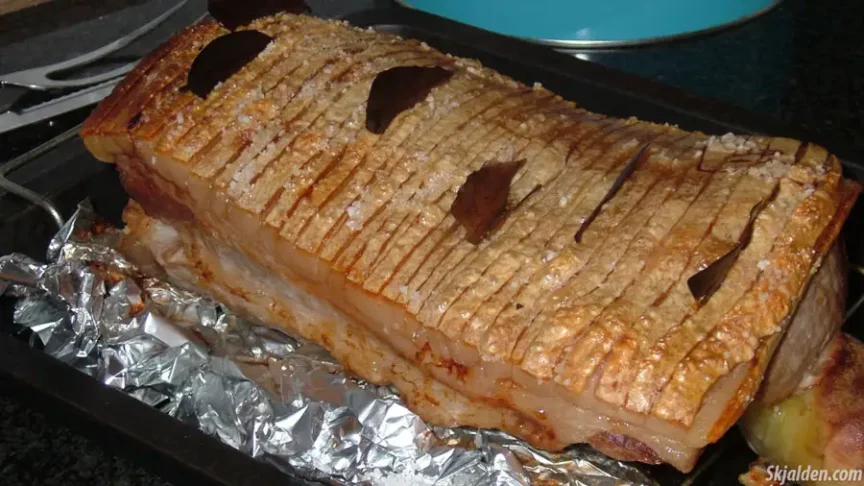Flæskesteg, the Danish take on roast pork, is a cornerstone of Denmark’s culinary traditions. Known for its crispy crackling and tender meat, this dish is a favorite in Danish homes, especially during festive times like Christmas (Yule). But what makes Flæskesteg stand out is not just its flavor, but its role in bringing people together around the dinner table.
The Historical Roots of Flæskesteg
The history of Flæskesteg is as rich as its flavor. Its roots can be traced back to the 19th century when it gained popularity following the introduction of home ovens. This period marked a shift from open-hearth cooking to more controlled methods, allowing for dishes like Flæskesteg to gain popularity due to the improved ability to roast meats evenly. This was a significant development in Danish culinary history, as it brought about a new era of home cooking and family gatherings.
Historically, pork has been a staple in Danish cuisine, partly due to the agricultural practices in the region. Denmark’s farming landscape has been conducive to pig farming, making pork a more accessible and popular choice of meat. This accessibility contributed to dishes like Flæskesteg becoming household staples.
The tradition of serving Flæskesteg at Christmas likely has roots in older winter solstice celebrations, where feasting and the consumption of hearty, rich foods played a central role. The dish’s association with Yule or Christmas would have strengthened as these celebrations became more formalized and intertwined with Christian traditions.
The secret to Flæskesteg’s distinctive taste lies in its preparation: the pork is cooked with its rind on, creating the signature crackling that makes this dish unique. This tradition of cooking Flæskesteg, with its emphasis on simplicity and taste, has been passed down through generations, making it a staple of Danish cuisine.
The beauty of Flæskesteg lies in its simplicity. The process involves roasting a cut of pork, traditionally the breast or neck, with the skin scored and seasoned. This results in a delicious contrast between the crispy skin and the succulent meat underneath. Often served with sides like potatoes, caramelized potatoes, chips, red cabbage, æbleflæsk, or grønlangkål, it makes for a heartwarming meal that brings a sense of nostalgia and comfort.
Flæskesteg in Modern Danish Culture
While deeply traditional, Flæskesteg has adapted to contemporary tastes. It’s not uncommon to find Flæskesteg sandwiches, a modern take that combines thinly sliced roast pork with rye bread and red cabbage. This adaptation showcases the versatility of Flæskesteg, making it a beloved dish not just during special occasions but in everyday Danish life.
The popularity of Flæskesteg isn’t confined to Denmark. In countries like Norway, it has become a part of Christmas dinner traditions, illustrating how food can transcend borders and become a shared cultural experience. This shows Flæskesteg’s ability to unite people through the universal language of good food.
Today, Flæskesteg is more than just a dish; it’s a symbol of Danish heritage and familial warmth. It’s about gathering with loved ones and sharing a meal that’s been a part of Danish life for generations. Flæskesteg embodies the joy of togetherness, making it a cherished part of Denmark’s culinary identity.
Image credit: Fru_green
